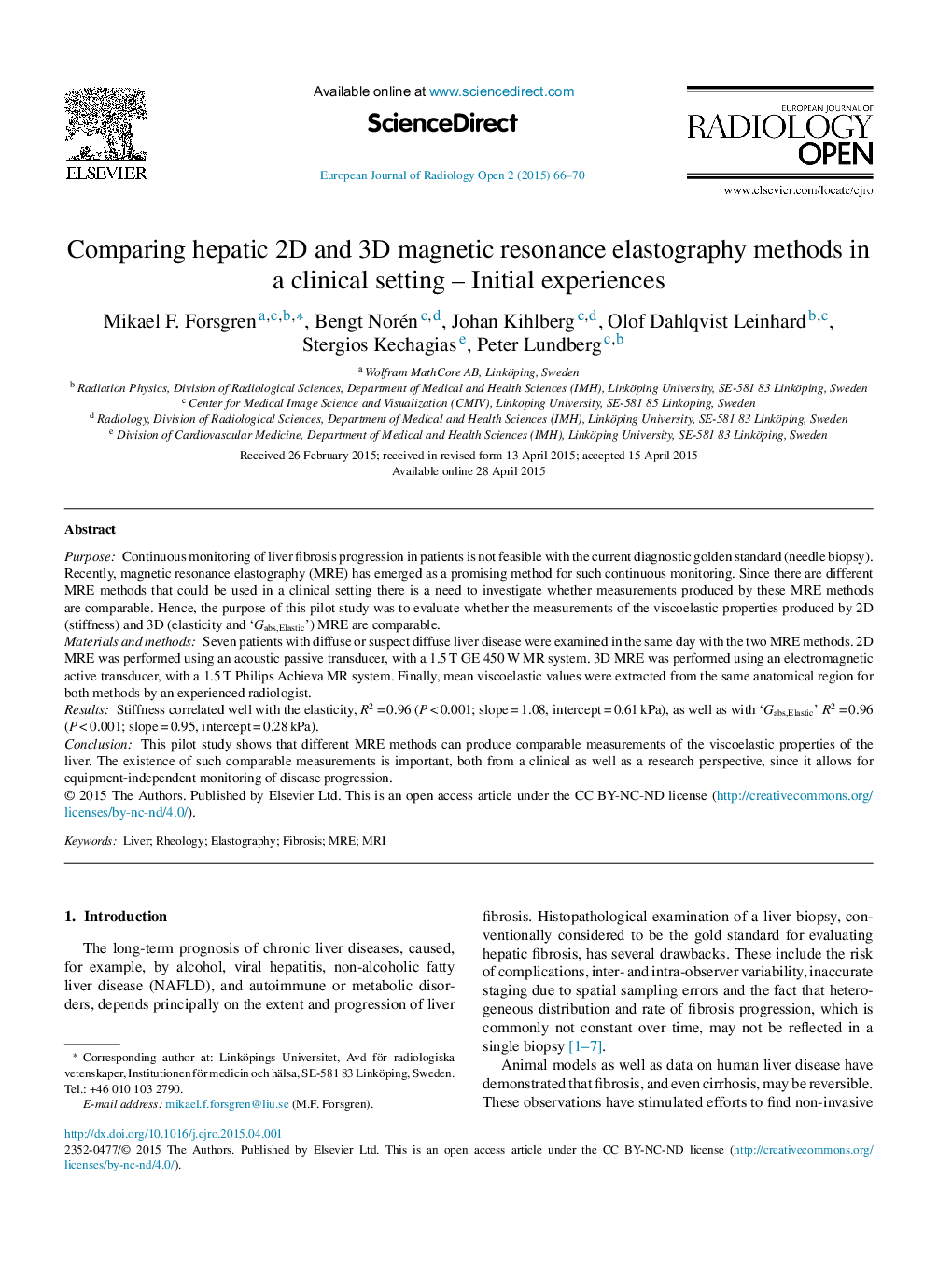| Article ID | Journal | Published Year | Pages | File Type |
|---|---|---|---|---|
| 4229707 | European Journal of Radiology Open | 2015 | 5 Pages |
PurposeContinuous monitoring of liver fibrosis progression in patients is not feasible with the current diagnostic golden standard (needle biopsy). Recently, magnetic resonance elastography (MRE) has emerged as a promising method for such continuous monitoring. Since there are different MRE methods that could be used in a clinical setting there is a need to investigate whether measurements produced by these MRE methods are comparable. Hence, the purpose of this pilot study was to evaluate whether the measurements of the viscoelastic properties produced by 2D (stiffness) and 3D (elasticity and ‘Gabs,Elastic’) MRE are comparable.Materials and methodsSeven patients with diffuse or suspect diffuse liver disease were examined in the same day with the two MRE methods. 2D MRE was performed using an acoustic passive transducer, with a 1.5 T GE 450 W MR system. 3D MRE was performed using an electromagnetic active transducer, with a 1.5 T Philips Achieva MR system. Finally, mean viscoelastic values were extracted from the same anatomical region for both methods by an experienced radiologist.ResultsStiffness correlated well with the elasticity, R2 = 0.96 (P < 0.001; slope = 1.08, intercept = 0.61 kPa), as well as with ‘Gabs,Elastic’ R2 = 0.96 (P < 0.001; slope = 0.95, intercept = 0.28 kPa).ConclusionThis pilot study shows that different MRE methods can produce comparable measurements of the viscoelastic properties of the liver. The existence of such comparable measurements is important, both from a clinical as well as a research perspective, since it allows for equipment-independent monitoring of disease progression.
